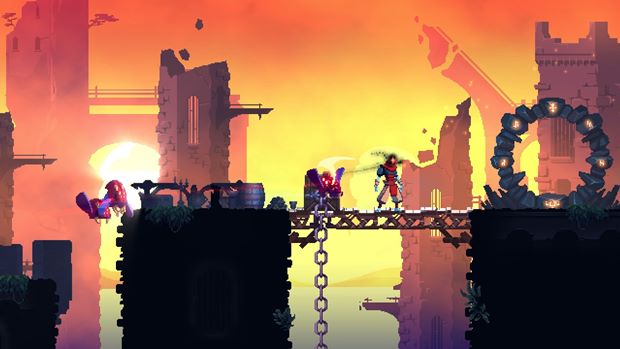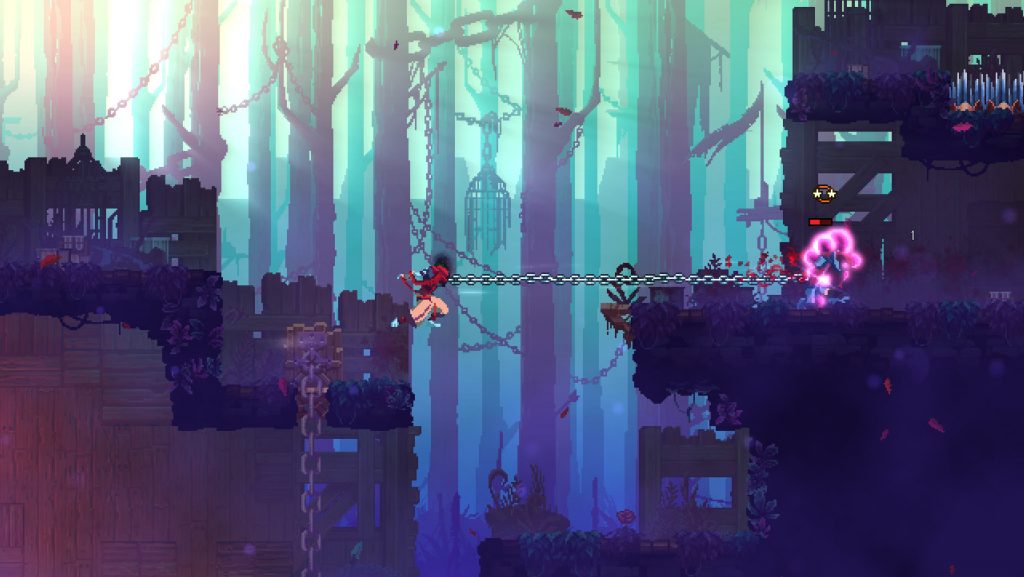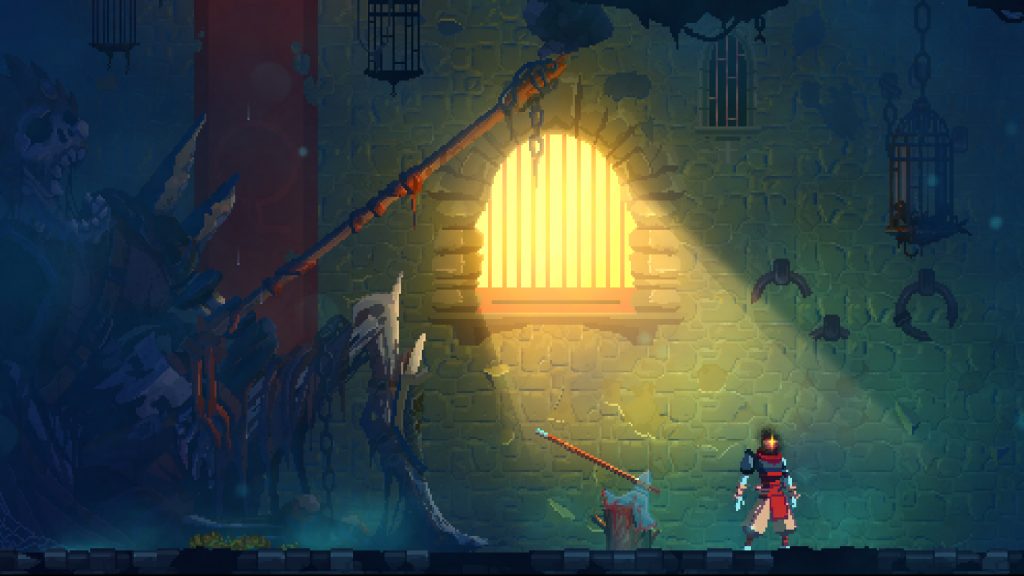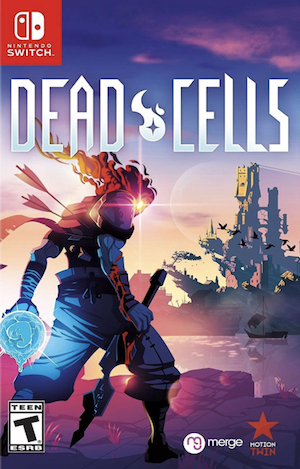
Dead Cells is an indie game that has managed to stand tall in a market with many similar independent titles. The game blends elements of both the Roguelite and Metroidvania genre, and it;s challenging to say the least. While there is permadeath, you are able to progress with each palythrough and unlock new shortcuts to get to objectives quicker.
To learn more about the development of this game, Gamingbolt reached out to the developers with some questions and Communication Manager Joan Blachere provided the following answers.
"We always loved pixel art and already had experience with it. But, we also wanted to offer a modern take on this art style by using lots of particles, an emphasis on motion and special effects, a 3D lighting system, and lots of shaders"
How exactly did you come up with the unique roguevania genre with Dead Cells?
Some of our previous games on browser already included permadeath and randomness as major pillars of the gameplay loop. When we decided to do “Castlevania, but with infinite replayability,” it seemed obvious to add those ingredients to our recipe.
With a game like this, the art style really makes a difference in making it stand out. What was your approach to developing the game’s art style?
We always loved pixel art and already had experience with it. But, we also wanted to offer a modern take on this art style by using lots of particles, an emphasis on motion and special effects, a 3D lighting system, and lots of shaders. We also used a 3D pipeline to get smooth animations, which is probably one of the things our players love most about Dead Cells.
Motion Twin used to develop for mobile games. What prompted the shift to PC/console games and has there been a difference in how you approach development?
Motion Twin shifted to mobile when the market for browser games collapsed. But, building mobile games based on data like a player’s behaviors, retention, and spendings isn’t how we like to design games. The company took a big risk when we moved away from the mobile market, which for all its faults was providing us with a sustainable business. We traded that relative security for the ability to develop a game that we wanted to play.
Being a small company and working without a boss must be quite an interesting experience. Can you tell us more about this and how it impacts the development process?
I guess every team member lives it differently, but being equals means we are all equally responsible for the success and failure of the company. It may lead to some lost sleep, but I don’t think anyone here would trade this organization for another. On the development side, criticism and suggestions are welcome, but you have the last word regarding the task you’ve been appointed, which really makes you feel like it’s ‘your’ baby, not something your boss forced you to do.
What impact has the Early Access process had on the game’s development?
In a way, the community became our boss, publisher, and producer. Suddenly, we had to answer to someone. Early Access brought so much to the table; feedback on features at every step of the iterative process, help in hunting bugs, suggestions for improvement, and more. Of course, you can’t be a mute wall to the community. Listening isn’t enough and you have to show it, which means communication becomes much more important to get the most out of Early Access.
What are your post-launch plans for the game?
There will be some free content to begin, as promised to the community as a thank you for having brought us where we are today. Then, we need to sit down with the community and have an honest discussion about more potential additions to the game, the interest for them, and economic model surrounding them.
"All in all, we have around 100 weapons including spear, spiky shields, daggers, fireballs, heavy broadswords, throwing knives, a wide assortment of bows and crossbows, and more"
What are some of the distinctive types of weapons we can expect to see in the game.
All in all, we have around 100 weapons including spear, spiky shields, daggers, fireballs, heavy broadswords, throwing knives, a wide assortment of bows and crossbows, and more. Each is then further differentiated by modifiers, like providing a damage boost against frozen targets, or causing defeated enemies to explode. Suffice to say that there is no shortage of variety.
How exactly do special powers work in the game?
These come in the form of Mutations. One might give you a little extra health, while another might amplify combos with particular types of weapons. There is a huge variety available for players to unlock, but only a limited number of mutations can be used at once. Combining mutations along with choices in gear allows players to tailor their capabilities to create a distinctive play-style.
What can you tell us about the Daily Challenge mode?
While the regular mode has randomized levels, the Daily Challenge is a fixed seed to add a pinch of competition to Dead Cells. It’s a way for friends and the best players to challenge each other by racking up points as they race to complete a session in under five minutes.
What are the resolutions and frame rates on the different console versions?
PS4, PS4 Pro, Xbox One, and Xbox One X all run at a low resolution (it’s a pixel art game, after all) at 60fps. The Nintendo Switch version may occasionally drop to around 40fps in some levels; an issue to which we are committed to further optimizing and improving the performance.
"We now know that loot boxes can potentially make players develop a form of addiction, much like gambling. Since kids are a major part of the target audience for video games, I can see why it’s problematic without at least a very big warning to parents"
What are your thoughts on loot boxes and in-game monetization, and all the drama surrounding it?
We now know that loot boxes can potentially make players develop a form of addiction, much like gambling. Since kids are a major part of the target audience for video games, I can see why it’s problematic without at least a very big warning to parents. I’m super-happy to see that all the drama has had an impact on the industry and made this economic model a no-go for many publishers and studios.
The current generation of consoles will probably end in the next couple of years. What is your biggest expectation from the next PlayStation and Xbox? Do you think the next-gen console era will be the 4k/60fps era?
Personally, I am almost exclusively a PC player, so I’m probably not the best person to ask. That said, I do believe that cloud gaming could be huge. As for 4k and 60fps, my gut says no and there are a few arguments to back that up, including how tricky optimization becomes at that level.
What’s next for Motion Twin?
We will keep working on Dead Cells for a bit, then begin discussing and prototyping the next project.


















